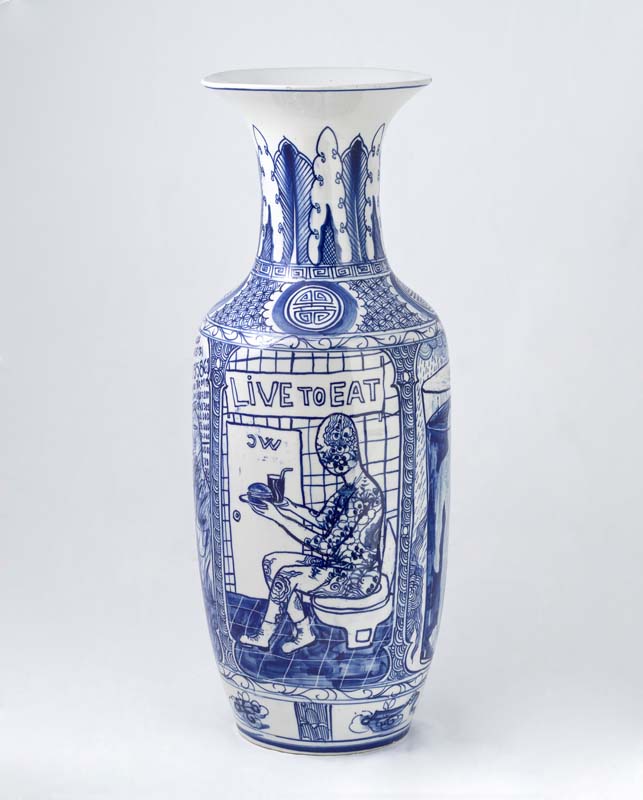We acknowledge the Traditional Owners of the land on which the Queensland Art Gallery | Gallery of Modern Art stands and recognise the creative contribution First Australians make to the art and culture of this country.

Bùi Công Khánh / Vietnam b.1972 / A contemporary story 2 2008 / Porcelain, hand-painted / 58 x 20 x 20cm / Purchased 2009 with funds from the Queensland Art Gallery Foundation Grant / Collection: Queensland Art Gallery | Gallery of Modern Art / © Bùi Công Khánh
Bùi Công KhánhA contemporary story 2 2008
Not Currently on Display
Bùi Công Khánh’s graphic, figurative images drawn on the porcelain, woven with traditional elements, portray the artist’s personal stories mixed with frenetic city life. As he explains, one vase includes his own face along with his mother’s because ‘my knowledge, my artistry were supported by my mom and her hard work’; another, A contemporary story 2, includes an image of a man submerged in a container of water, ‘swimming in his puddle of life and thinking that it is as huge as [an] ocean’ — a familiar predicament.1
Bùi’s often humorous stories are, however, more intriguing than these descriptions might suggest; the vases present layered narratives, composed of multiple images. A contemporary story 2, for example, has an image of a second man sitting on a toilet and holding a plate with a hamburger and a can of soft drink. Writ large above the figure are the words ‘Live to eat’, which comments on far-reaching Western consumerist society — a recurrent theme in Bùi’s art.
‘I paint the life calmly like writing my diary’, he says. Bùi Công Khánh’s ceramics — as well as his paintings, performances and sculptures — skilfully link contemporary society in Vietnam to history. But, even as he draws on traditional practice, what he cares most about ‘is the present life, I don’t want to sponge the past, I don’t want to use the past like a way to preserve the “national cultural character”’.2
Endnotes:
1. Bùi Công Khánh, email to Russell Storer, QAGOMA, 8 February 2009.
2. Bùi Công Khánh, email to Russell Storer.
Bùi Công Khánh’s paintings, performances, sculptures and ceramics address history and contemporary society in Vietnam, particularly the increasing impact of global capital. His paintings and drawings are often figurative and deeply personal, drawing on Buddhist and Taoist philosophy. Bùi’s most recent series of works incorporate drawing into the traditional form of Vietnamese blue-and-white porcelain vases.
In Vietnam, as in China, blue-and-white wares were primarily produced as a trading commodity, and absorbed numerous influences from China, Cambodia and India. Bùi’s vases address what he calls ‘the character of the present’, the sounds and sights of daily life. They include motorbike riders, street signage, advertising and romantic interludes. By working with the traditional form of the ceramic vase, Bùi aims to place the culture of modern life into the flow of history.